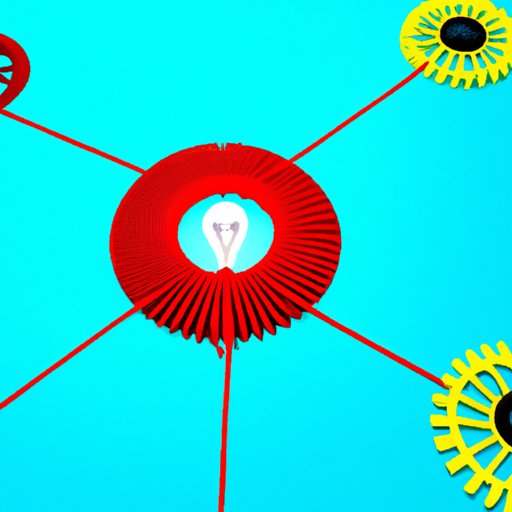Introduction
Problem-solving is an everyday task that we come across in both personal and professional life. These may range from small issues to more complex ones that require brainstorming, analytical skills, and critical thinking. While solving problems individually is quite possible, there are situations where a collaborative approach is necessary. In this article, we will explore the concept of collaboration and how it can help you and your team solve problems more effectively.
Defining Collaboration and Its Benefits in Team Problem-Solving
Collaboration refers to the practice of working together to achieve a common goal. In team problem-solving, collaboration can bring diverse ideas and perspectives together, leading to better outcomes. Collaborative problem-solving can:
- Bring different ideas and approaches together.
- Promote efficient use of resources.
- Improve decision-making and generate better solutions.
- Encourage team members to take responsibility and ownership of the outcomes.
- Enhance communication and build trust among the team members.
Examples of Successful Collaborations in Problem-Solving Scenarios
Collaboration has been an essential aspect of many successful problem-solving scenarios across various industries. Here are some examples:
- Space Exploration: NASA’s Mars rover landing required collaboration between hundreds of engineers, scientists, and technicians from various organizations.
- Product Design: The development of the Tesla electric car involved collaboration from diverse groups such as software engineers, mechanical engineers, and manufacturing experts.
- Healthcare: During the COVID-19 pandemic, healthcare workers collaborated with different experts to develop vaccines, which required teamwork and collaboration.
These examples illustrate how collaboration can bring diverse expertise and skills together to achieve a common goal. Collaborative problem-solving is a powerful tool that can lead to excellent outcomes.
Fostering Creativity and Innovation Through Collaboration
Collaboration allows people to work together freely, bringing their unique outlook, ideas, expertise, and experiences together. This free exchange of thoughts and ideas can encourage creative and innovative solutions to problems. The shared effort and input in a problem-solving process can also generate a sense of shared ownership in the solution, leading to better results.
Effective Communication as a Necessary Component of Good Collaboration
Effective communication is crucial in a collaborative problem-solving scenario. Good communication helps team members to share their ideas, understand each other’s perspectives, and ultimately create a better solution. Collaboration requires effective communication techniques such as:
- Active Listening: Paying attention to team members’ ideas actively.
- Clarity: Ensuring that communication is clear and concise.
- Feedback: Providing feedback on ideas to improve them.
- Empathy: Understanding the perspectives of the team members.
- Respect: Creating a safe environment where members feel comfortable sharing their ideas without feeling judged.
Effective communication encourages collaboration and enhances problem-solving capabilities by creating a more productive and focused work environment.
Frameworks or Tools for Better Collaboration in Problem-Solving
Several frameworks and tools can be used to encourage better collaboration among team members when problem-solving. Here are some of them:
- Brainstorming: A technique to generate new ideas for problem-solving.
- Mind Mapping: A tool to map out a problem and identify potential solutions.
- Creative Problem-Solving: A structured approach to problem-solving through a five-step process: define, research, generate ideas, develop solutions, and implement.
- Agile Methodology: A methodology that involves frequent communication, collaboration, and quick iterations to find solutions.
These frameworks and tools help create a structured process for problem-solving that promotes collaboration and effective communication while considering different perspectives and ideas.
Case Studies of Poor Collaboration Leading to Failure
Poor collaboration in problem-solving can lead to negative outcomes. Here are two examples of failures where poor collaboration played a significant role:
- Challenger Spacecraft Disaster: A lack of communication and collaboration between NASA and Morton Thiokol, the manufacturer of the space shuttle’s solid rocket boosters, led to the tragic Challenger spacecraft disaster in 1986.
- Kodak’s Bankruptcy: Kodak’s failure to collaborate with digital start-ups led to their inability to keep up with the digital photography industry’s changes, which ultimately led to their bankruptcy.
Both these examples show how poor collaboration led to failures that could have been avoided through better collaboration and communication.
Practical Tips for Implementing Collaboration in Problem-Solving
To implement collaboration in problem-solving successfully, teams can use these practical tips:
- Create a Positive Environment: Develop a team environment that encourages collaboration and open communication.
- Establish Common Goals: Establish clear goals that everyone understands, and that the team can work towards together.
- Define Roles: Define roles for each team member to ensure that everyone’s contributions are essential for the problem-solving process.
- Encourage Diversity: Encourage diverse ideas and perspectives to promote creativity and innovation in solutions.
- Share Responsibility: Ensure that team members understand their responsibilities and hold themselves accountable for the outcomes.
Conclusion
Collaboration is the key to effective team problem-solving. It encourages creativity, innovation, and diverse approaches to problem-solving. Good communication, carefully designed frameworks, and practical tips are necessary to implement effective collaboration successfully. In contrast, poor collaboration can lead to negative outcomes, as seen in our case studies. Developing a collaborative problem-solving mindset and implementing effective collaboration practices can create a successful, productive, and high-performing team environment.
(Note: Is this article not meeting your expectations? Do you have knowledge or insights to share? Unlock new opportunities and expand your reach by joining our authors team. Click Registration to join us and share your expertise with our readers.)
